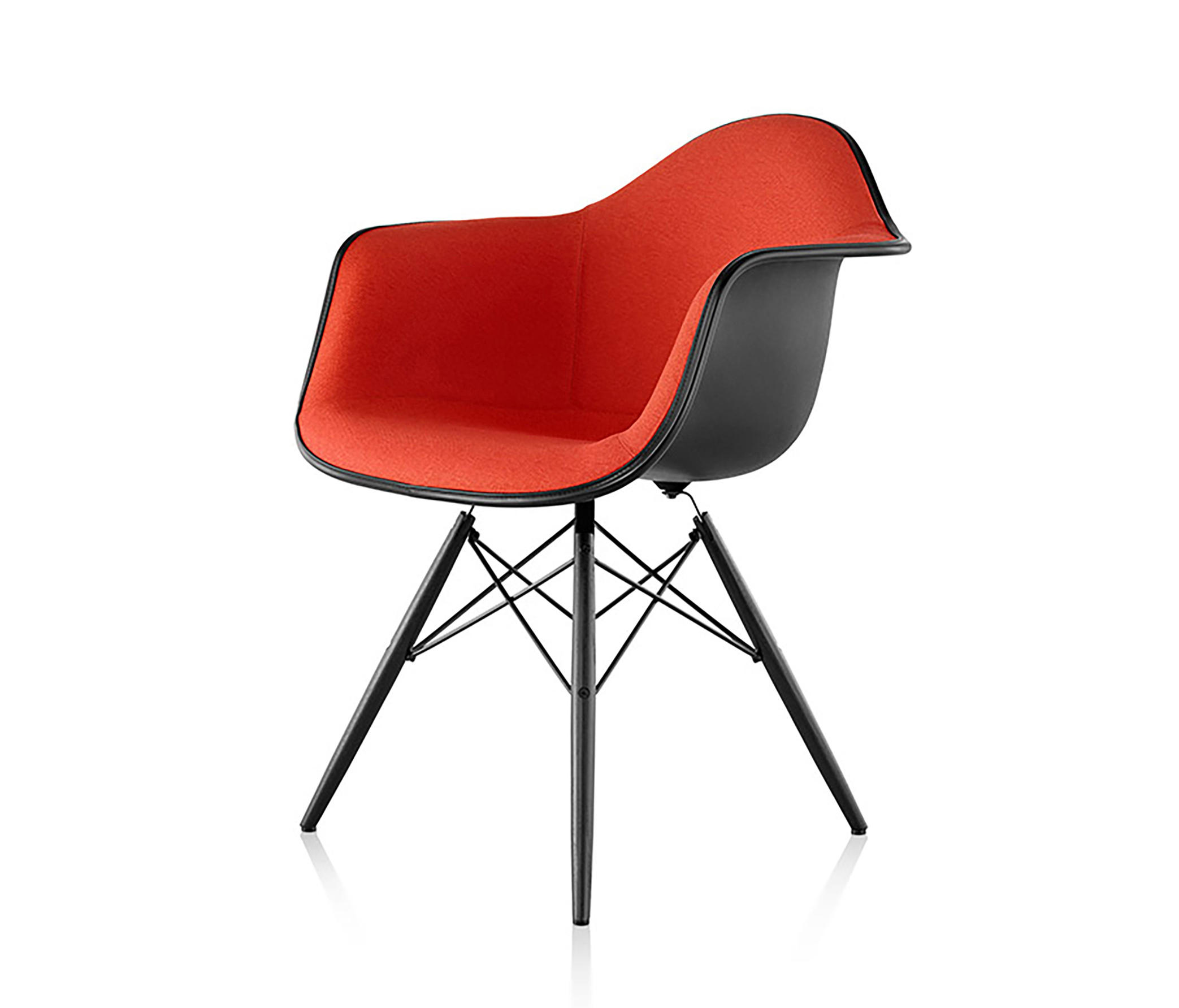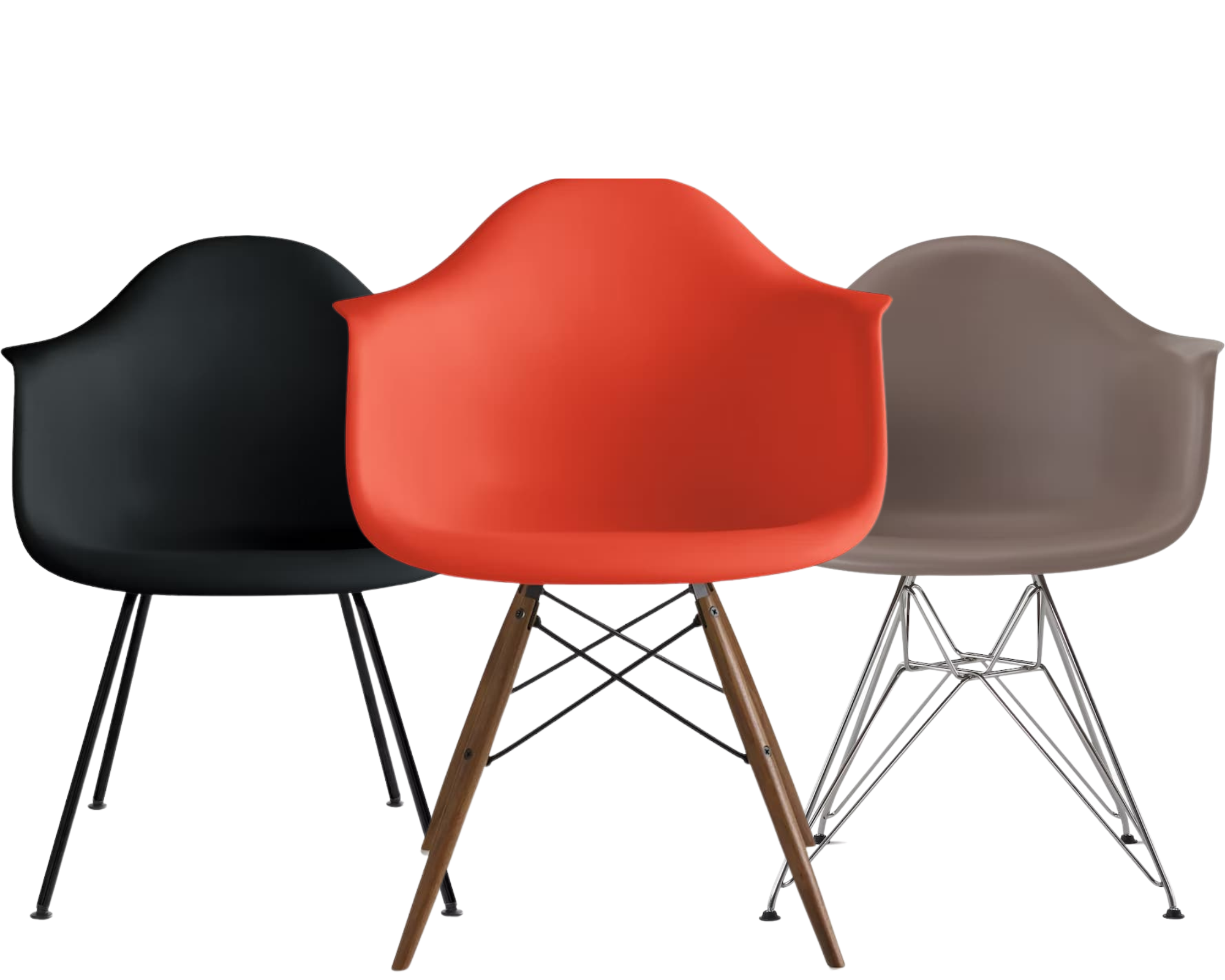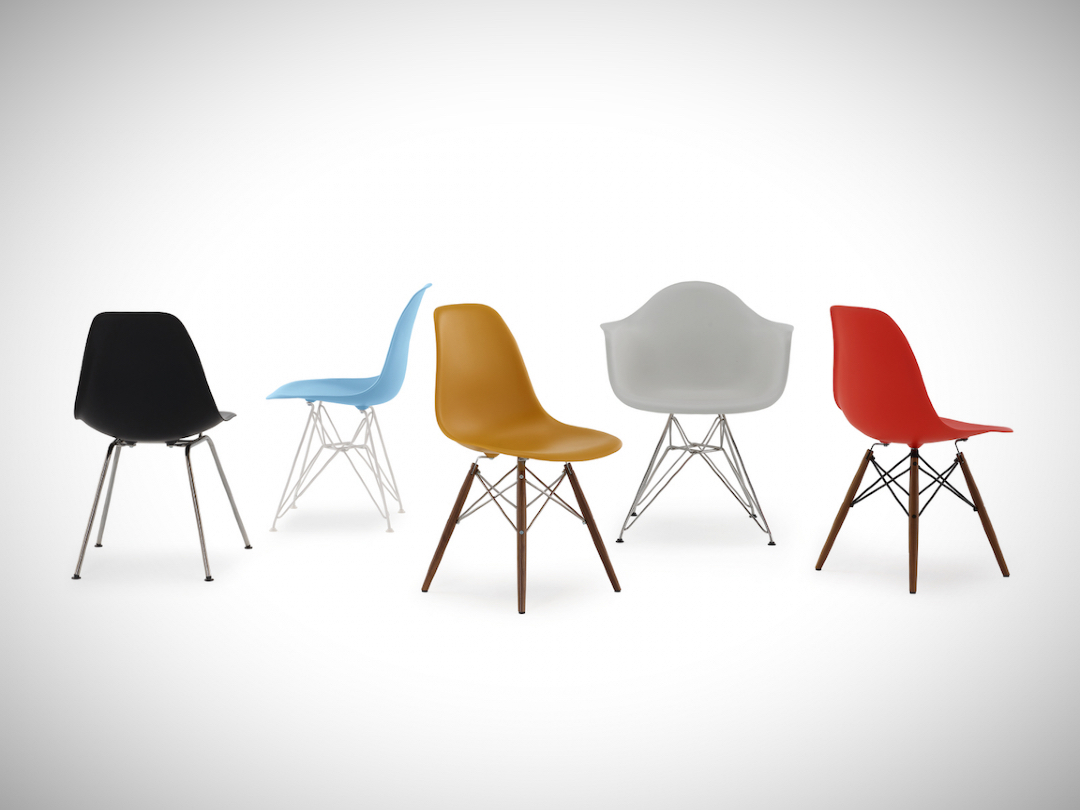History and Design: Eames Molded Plastic Chair Wood Legs

The Eames Molded Plastic Chair with Wood Legs, a timeless design icon, embodies the spirit of mid-century modernism. This iconic chair’s journey began in the 1940s, a period marked by a desire for innovative and functional designs.
Origins and Inspiration
The Eames Molded Plastic Chair’s story starts with the legendary design duo, Charles and Ray Eames. Inspired by the potential of new materials and production techniques, they aimed to create furniture that was both affordable and aesthetically pleasing. Their quest for a comfortable and durable chair led them to experiment with molded plywood during World War II. The war’s need for lightweight and efficient materials further fueled their exploration.
Design Philosophy
The Eames molded plastic chair with wood legs reflects the Eames’ design philosophy, which emphasized functionality, comfort, and affordability. They believed that good design should be accessible to everyone, not just the elite. The chair’s simple yet elegant form, achieved through the innovative use of molded plastic, embodies this philosophy. The chair’s contoured seat and back provide exceptional comfort, while its sturdy wood legs offer stability and durability.
Evolution of the Chair
The Eames molded plastic chair with wood legs has undergone several variations and modifications over the years, reflecting evolving design trends and technological advancements.
- 1948: The Eames’ first molded plywood chair, the “DCW” (Dining Chair Wood), was introduced. This chair, with its organic form and laminated plywood shell, established the foundation for future designs.
- 1950: The Eames introduced the “DSW” (Dining Side Chair Wood), a variation of the DCW with a slightly smaller seat and a more streamlined profile. This chair became a popular choice for dining rooms and kitchens.
- 1950s: The Eames began experimenting with fiberglass-reinforced plastic, leading to the creation of the “DSR” (Dining Side Chair Rod Base) in 1950. This chair, with its molded plastic shell and rod base, was a significant departure from the earlier plywood designs, marking a shift towards lighter and more affordable materials.
- 1957: The “DSX” (Dining Side Chair X Base) was introduced, featuring a molded plastic shell with a distinctive X-shaped base. This variation offered increased stability and durability, making it suitable for a wider range of applications.
- 1960s: The Eames continued to refine their plastic chair designs, introducing variations with different colors, finishes, and base options. These variations allowed for greater customization and flexibility, catering to a diverse range of tastes and needs.
Comparison with Other Iconic Chairs
The Eames molded plastic chair with wood legs holds a prominent place in the pantheon of iconic chairs from the mid-20th century. It stands out for its innovative use of materials, its emphasis on functionality and comfort, and its enduring cultural impact.
| Chair | Materials | Design | Cultural Impact |
|---|---|---|---|
| Eames Molded Plastic Chair with Wood Legs | Molded plastic, wood | Organic, streamlined, comfortable | Symbol of mid-century modernism, widely adopted in homes, offices, and public spaces |
| Barcelona Chair | Leather, steel | Elegant, luxurious, sculptural | Represents modernism’s embrace of industrial materials, favored by architects and designers |
| Cesca Chair | Cane, steel | Lightweight, airy, functional | Popular for its simplicity and versatility, often used in dining rooms and cafes |
Materials and Construction

The Eames molded plastic chair with wood legs is a testament to the power of innovative materials and clever construction techniques. The chair’s enduring popularity stems from its seamless blend of form and function, achieved through a careful selection of materials and a meticulous manufacturing process.
Plastic Molding
The chair’s iconic shell is made from a single piece of molded plastic. This was a revolutionary approach at the time, pushing the boundaries of what was possible with plastic. The Eameses experimented with various types of plastic before settling on fiberglass-reinforced polyester resin. This material offered the ideal combination of strength, flexibility, and durability.
The process of molding the plastic shell was complex and required significant technological advancements. The Eameses collaborated with Zenith Plastics to develop a new molding technique that allowed them to create a three-dimensional, contoured shape from a single sheet of plastic. This involved heating the plastic to a precise temperature and then pressing it into a mold. The mold itself was a marvel of engineering, meticulously crafted to ensure the chair’s precise shape and comfortable contours.
The challenges of this process were numerous. The high temperatures required to mold the plastic could cause it to warp or distort. The Eameses also had to overcome the problem of air bubbles forming within the plastic during the molding process. To address these challenges, they developed innovative techniques for controlling the temperature and pressure during the molding process.
The result was a chair that was both strong and lightweight, with a smooth, contoured surface that was comfortable to sit on. The plastic shell also provided a degree of flexibility, allowing the chair to conform to the user’s body.
Wood Leg Construction, Eames molded plastic chair wood legs
The chair’s legs are made from solid wood, typically beech or maple. These woods were chosen for their strength, durability, and natural beauty. The Eameses explored various joinery techniques to connect the wood legs to the plastic shell. They experimented with different types of dowels, screws, and adhesives, eventually settling on a system that was both strong and aesthetically pleasing.
The legs are typically attached to the plastic shell using a combination of dowels and screws. The dowels provide a strong, secure connection, while the screws add extra strength and stability. The joinery is designed to be both durable and invisible, ensuring that the chair’s elegant lines are not disrupted.
The wood legs are finished with a natural stain or paint, which enhances the wood’s natural beauty and protects it from scratches and moisture. The finish also helps to create a harmonious visual balance between the plastic shell and the wood legs.
Durability and Longevity
The Eames molded plastic chair with wood legs is renowned for its exceptional durability and longevity. The combination of fiberglass-reinforced polyester resin for the shell and solid hardwood for the legs ensures that the chair can withstand years of use. The chair’s simple, elegant design also contributes to its durability. The lack of complex moving parts reduces the risk of wear and tear, ensuring that the chair remains functional and aesthetically pleasing for many years to come.
The chair’s construction methods also play a significant role in its durability. The use of dowels and screws to connect the wood legs to the plastic shell creates a strong, secure connection that is resistant to stress and strain. The chair’s simple, elegant design also makes it easy to repair or replace damaged parts, ensuring that the chair can be enjoyed for generations to come.
Cultural Impact and Legacy

The Eames molded plastic chair with wood legs, a true icon of mid-century modern design, has transcended its original purpose as a simple seating solution to become a symbol of innovation, style, and cultural influence. Its widespread adoption and enduring appeal have left an indelible mark on the world of furniture design and continue to inspire generations of designers and enthusiasts alike.
Widespread Adoption and Influence on Modern Furniture Design
The chair’s groundbreaking design, combining the practicality of molded plastic with the warmth and elegance of wood, resonated with a rapidly changing society. Its affordability and versatility made it an instant hit, finding its way into homes, offices, and public spaces around the globe. This widespread adoption not only cemented its status as a design classic but also significantly influenced the trajectory of modern furniture design. The chair’s minimalist aesthetic, focus on functionality, and innovative use of materials became defining characteristics of mid-century modernism and continue to inspire contemporary furniture design.
Significant Cultural Moments
The Eames molded plastic chair with wood legs has been a constant presence in significant cultural moments, reflecting its adaptability and versatility. From its iconic appearance in the film “The Graduate” (1967), where it served as a symbol of youthful rebellion and change, to its inclusion in the permanent collection of the Museum of Modern Art (MoMA) in New York City, the chair has consistently been associated with moments of cultural significance. Its presence in numerous films, television shows, and artistic endeavors has cemented its place as a cultural icon, transcending its role as a mere piece of furniture.
Enduring Appeal and Continued Relevance
The Eames molded plastic chair with wood legs continues to hold its own in the ever-evolving world of design. Its timeless aesthetic, combined with its enduring functionality, makes it a relevant choice for contemporary settings. The chair’s ability to seamlessly integrate into a variety of environments, from minimalist modern spaces to traditional interiors, speaks to its enduring appeal and versatility. This adaptability ensures its continued relevance in the 21st century, where design trends are constantly shifting.
Iconic Images
The Eames molded plastic chair with wood legs has been captured in numerous iconic images, showcasing its timeless aesthetic and versatility.
* A classic black and white photograph captures the chair in a minimalist setting, highlighting its clean lines and elegant form. The image embodies the essence of mid-century modernism, with its focus on simplicity and functionality.
* A vibrant image showcasing the chair in a bustling outdoor café, demonstrates its adaptability to various environments. Its presence adds a touch of sophistication to the casual setting, while its comfortable design invites relaxation.
* A photograph of the chair in a contemporary home, showcasing its ability to seamlessly blend into modern interiors. The chair’s sleek lines and neutral color palette complement the minimalist aesthetic of the space, creating a harmonious and inviting atmosphere.
These images, and countless others like them, showcase the enduring appeal and versatility of the Eames molded plastic chair with wood legs, solidifying its status as a design icon.
Eames molded plastic chair wood legs – The Eames molded plastic chair with wood legs is a classic design that exudes a timeless elegance. While its simplicity and functionality are undeniable, the homepop modern velvet and wood chair offers a contemporary twist, incorporating plush velvet upholstery for added comfort and a modern aesthetic.
Both designs, however, showcase the enduring appeal of marrying the natural warmth of wood with the versatility of molded plastic, creating chairs that are both functional and visually captivating.
The Eames molded plastic chair with wood legs is a classic example of mid-century modern design, known for its simplicity and functionality. While it embodies a minimalist aesthetic, the emmerson reclaimed wood swivel chair offers a different approach, emphasizing sustainability and rustic charm through its use of reclaimed wood.
Both chairs, however, share a commitment to quality materials and craftsmanship, showcasing the enduring appeal of timeless design principles.
